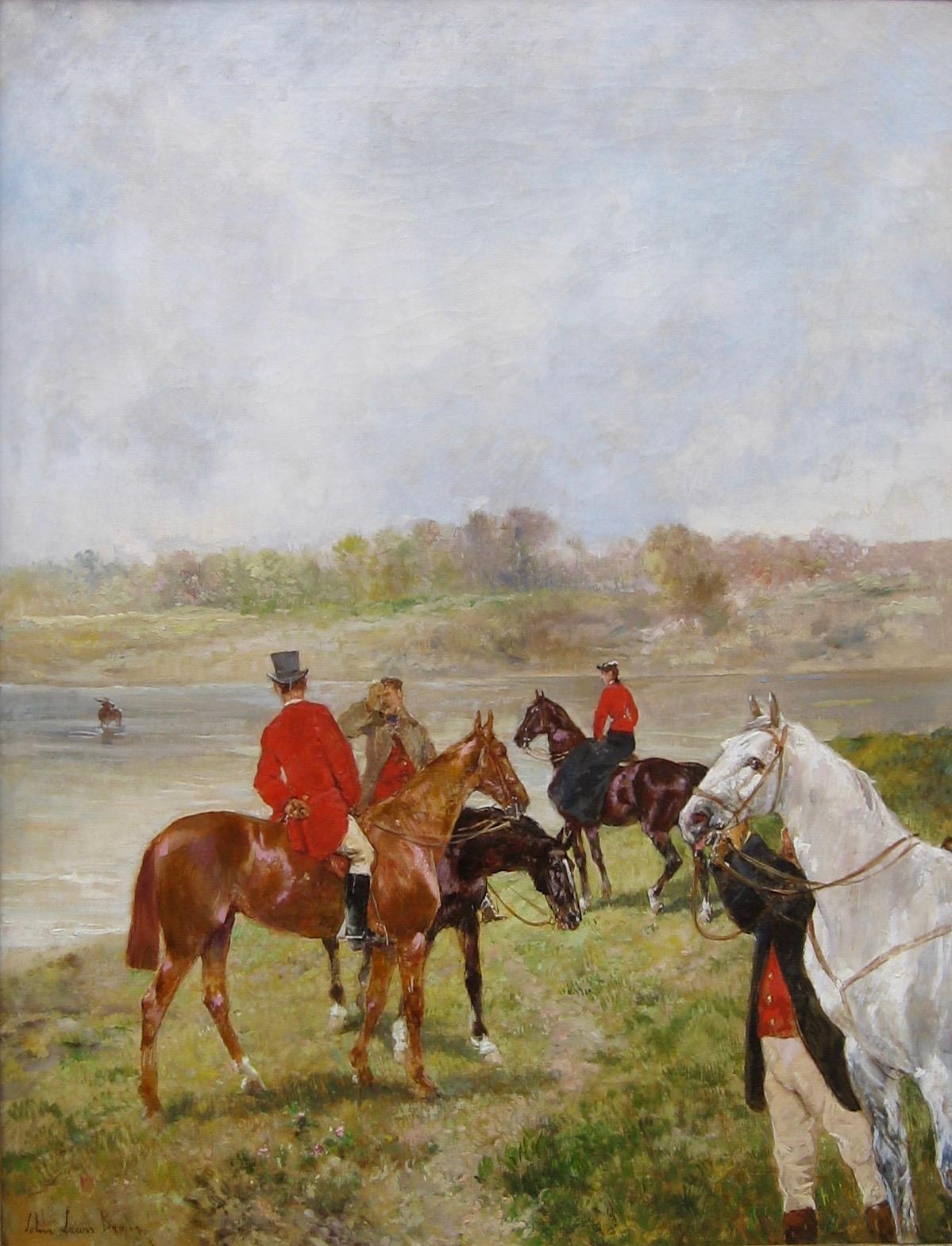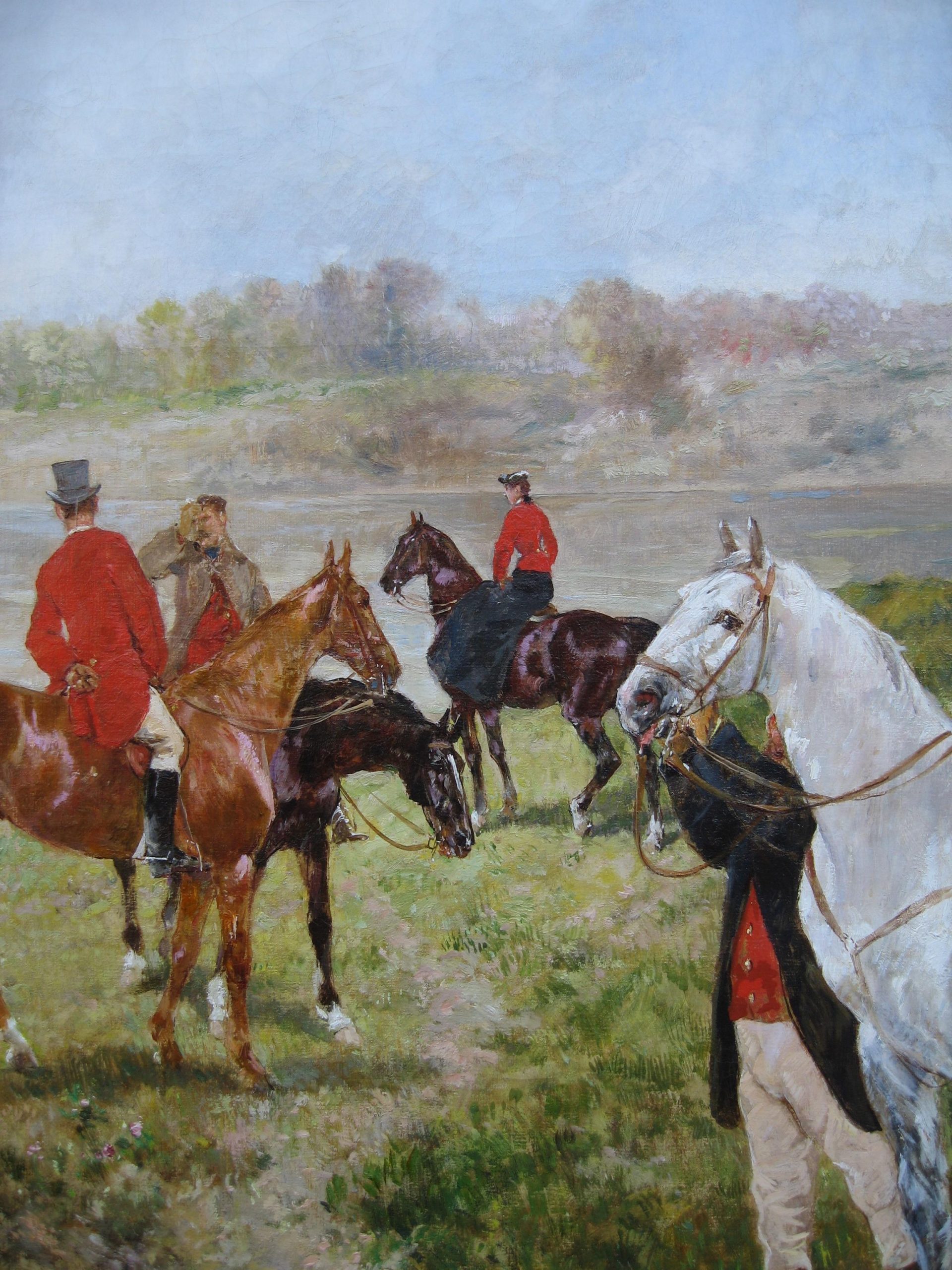John Lewis Brown
Bat-l’eau, hunting scene
Oil on canvas
Signed lower left
Size: 65 x 50cm
With frame: 78 x 62 cm
Old exhibition label on the back with the name of the artist, an exhibition number 656 and titled “Les bords de l’étang”
Price: 12,000 euros
John Lewis Brown was born in Bordeaux to a family of 18th century English dignitaries. Coming from Scotland, the Browns would have introduced the race of English thoroughbreds in France.
This painting illustrates a hunting party. The scene illustrates the bat-l’eau, the moment of the hunt when the hunted animal takes refuge in the water. Horses and men stand still; the hunters give up pursuit. With humour, the painter gives the man in the foreground the head of his white horse.
The painter pays all his pictorial attention to the beast, the man is nothing more than a colorful anecdote. The touch is free and precise, the colors bright and the palette reduced. He paints with a clear, assertive style. The artist refuses to academicism as to the romantic humanization of the beast, only interests him the tamed horse, which he studies in the exercise of his functions.
At the beginning of the century, the interest shown in Lewis Brown was more linked to his late rallying to Impressionism than to his first style. From his second pictorial impulse, he corresponds with Pissarro, Manet, Degas, Sisley, Isabey. His palette brightened when he joined the Impressionists in Paris.
During his lifetime, John Lewis Brown moved away from the politics of the Salons and institutional events. In 1848, he made his debut at the Salon with Tambour , and did not exhibit again until 1859. The artist only wants to know the joy of painting: he only wants to be his painter, his analyst, his psychologist, poet of his attitudes and his preferences.
His ambition is to adore horses and paint them up close. If the painter gives himself masters, Géricault surpasses them all. He admires him for having “enjoyed himself in the real stables, among the pride, the brutality and all that is most horselike in the horse”.
His father owns a chateau in the Bordeaux region; winery still in operation today. The stud he owns is his son’s first step towards equine painting: he tirelessly copies and draws horses. The painter is self-taught; he worked for two years at the Haras des Pins and looked at the work of Bonington, a distant precursor of Impressionism, towards whom he showed his sympathy.
He copies Cuyp, Karel, Philips Wouverman, travels around Italy twice. In 1852, he made a long stay in Copenhagen to respond to a commission from the French State, to copy Les Pèlerins d’Emmaüs by Rembrandt. The painter meets with success through exhibitions in the provinces, receives a gold medal in Limoges. His birth made him legitimate with the aristocracy that he portrayed for a time.
Bibliography:
• We owe most of the biographical information on the painter to his brother, Ralf Brown, Inspector of Fine Arts in Paris. He spoke directly with Léonce Bénédicte, curator of the Musée du Luxembourg and editor of the artist’s exhibition catalogue.
• Léonce Bénédicte, John Lewis Brown, biographical and critical study, catalog of the artist’s engraved and lithographed works , Paris, Librairie de l’Art Ancien et Moderne, 1903.
Exhibitions:
• cat. exp. Gilberte Martin-Méry, Jacques Chaban-Delmas, Pierre Schommer, John Lewis Brown, 1829-1890 , [exhibition: Bordeaux, Galerie des Beaux-Arts, from Oct. 19 to Nov. 9, 1953] Bordeaux, Delmas, 1953.
Museums:
• Preserved at the Musée d’Orsay, Paris and at the National Gallery, London.





